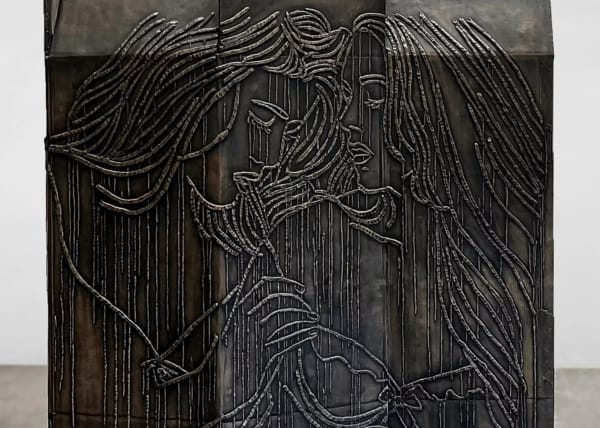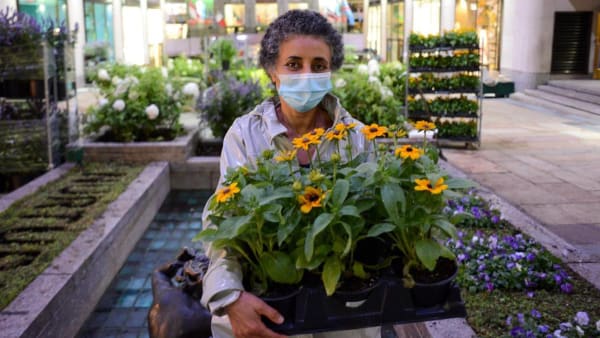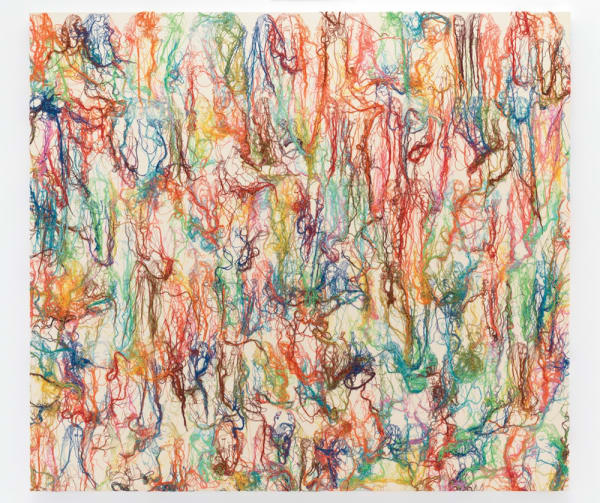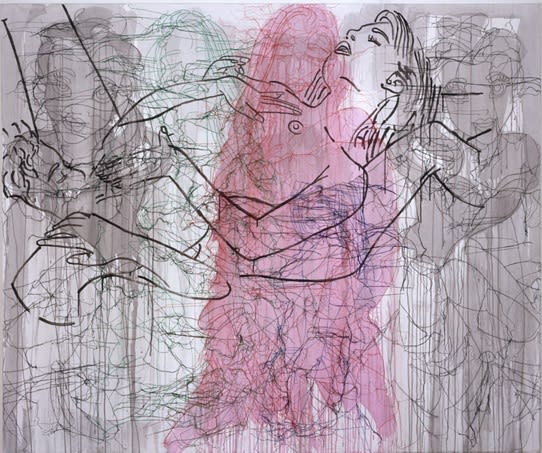Paravent Girls: Ghada Amer
Tina Kim Gallery is pleased to present Paravent Girls, a solo exhibition including the new sculpture series by Ghada Amer (b.1963). Her figures, portrayed tactfully on a used paper box, are a bronze sculpture series commemorating the autonomous subjectivity of all women. It was completed in cooperation with the Korean bronze cast master. Paravent Girls will serve as an opportunity to consider contemporary feminism.
Ghada Amer’s new bronze series starts by finding some object on the street. Empty boxes left behind are placed here and there around the corner. On this paper box of ‘design without design’, there is no fixed address. Being folded, unfolded, and crumpled, it is at once surface and space. From warehouse to warehouse or from the loading deck of a port or an airport to another, it travels covered in the temperature and dust of the ground, unaware of the next step. Now let us call this a sort of ‘flying landscape’ that has seceded from the place. The unfolded box becomes propped up for painting. The artist leaves her unknown women on the surfaces inside and outside. The black ink blots rain onto the repetitive and humble pattern on the surface of the box. Like the principle of gardens where nameless seeds grow into the ground, the address-less boxes become residences of characters and the women become residences of flying landscape. Here, there is no such hierarchy as painting and sculpture, or figure and background.
Between visual image and physical sculpture, the artist makes a choice that evades familiar structures. In the bronze series, Amer uses not the brush that she had used for drawing the images of women but soft clay. Therefore, the drawings, due to the clay, gain the surface of the handprint and traces of its movement. Rubbing, cutting, stretching, kneading, and sticking; drawing with clay embraces by hand all the facial expressions of the character, her wavy hair, brow, plump lips, mesmerizing eyes, and even the traces of sharply fallen ink drops. The ‘surface’ of something being engraved is the same as revealing the levels of time, which also means that the flat perspective of the image is turned into a sculptural perception. And at this point, bronze casting is an appropriate way to record the surface. Casting is literally the trace left by empty space (absence). Its temporality is paradoxical. Though it is touched in the present, it is taxidermized from the touch of the past, and though it is a trace originating from a past that no longer exists, it encounters unexpected bodies in the inflection points and heat of casting, which required high temperature. This paradox gives a déjà vu of the processes of the artist’s many practices that subverted the idea and image of woman even as a woman herself. In my eyes, having seen the production as several seasons changed, the process of temporary boxes and the unknown woman becoming one appeared to me full of meaning, as if it were the ballad of lovers whispering to each other.
-

7 Must-See Shows during Frieze Seoul
Artsy August 25, 2022A new series of Ghada Amer’s darkly explicit female figures will debut at Tina Kim Gallery’s pop-up space at the Songwon Art Center. Made in...Learn More -

Ghada Amer: How Egyptian artist Ghada Amer has weaved an expression of feminism into her paintings
Arts & Culture April 1, 2021By Nadine Khalil In Ghada Amer’s paintings, threads behave like coloured rivers, abstraction obscures figuration and unknown women proliferate. However, for the first time, familiar...Learn More
-

Ghada Amer
Art in America September 1, 2018Over the last twenty-five years, Ghada Amer has developed a body of work centered on installations and embroidered paintings exploring women’s self-determination and sexual independence....Learn More -

Ghada Amer: Love Has No End
The Brooklyn Rail September 1, 2008Ghada Amer is best known for works that at first glance seem to be Abstract Expressionist paintings but are actually pornographic images of women embroidered...Learn More


